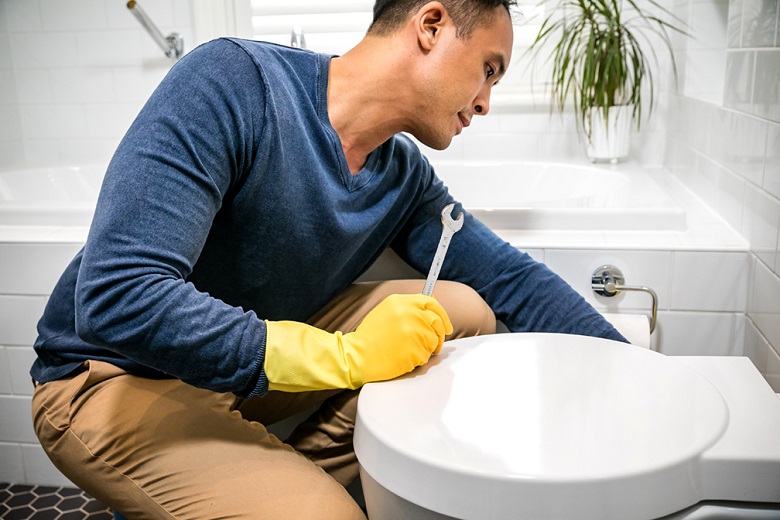Leaky loos being engineered out of existence
Tuesday 16th March 2021 11:30

Water waste is being stamped out in homes across the country thanks to Thames Water and manufacturers joining forces to tackle leaky loos.
The water company, representing the UK Water Efficiency Strategy Steering Group, has teamed up with the Bathroom Manufactures Association (BMA) and its members to tackle the issue after plumbers carrying out water saving audits in customers’ homes noticed some types of toilets were more prone to leaks.
A database was shared with the makers of the toilets with certain flushing mechanisms, and many classed as problematic are no longer on the market. The manufacturers have also committed to continually improving the designs of their toilets, making them more efficient than ever before.
Research by charity Waterwise, which this week is hosting its annual conference where leaky loos will be high on the agenda, has shown between five and eight per cent of UK households have a leaky loo, with around 95 per cent of them found on push-button dual-flush toilets.
Nicci Russell, Waterwise MD, said: “Water scarcity is an issue right here, right now, right across the UK, and we need to work together to tackle it, as well as trying not to waste water ourselves.
“We’re delighted to see progress being made on leaky loos and to see such a positive response from the bathroom manufacturers. We definitely need to see the most leak-prone products off the market. It links in well with some new guidance we have published on our website for people looking to buy a dual-flush toilet.”
A leaky loo, which has water running constantly down the back of the pan, can waste hundreds of litres of water a day if left unrepaired. Many of these leaks are hard to spot, meaning many homeowners don’t even know if their loo is wasting water.
Andrew Tucker, water efficiency manager at Thames Water, said: “We’re really pleased with the progress towards engineering the leaky loo problem out of existence. It's great news for consumers who will have access to better products which don’t leak and waste money, but also for the environment. Every drop of water saved means more stays in rivers and other waterways to support wildlife including birds, fish and insects which are all vital for a healthy ecosystem.”
Waterwise, Thames Water and SES Water are also working with the BMA to ensure dual-flush toilets make it clear which button is for the smaller, water-saving flush. Consumer research has highlighted that many people find some current designs confusing, meaning they press either the wrong button or both at once as, for example, a small button doesn’t necessarily mean a small flush as most people would expect.
Tom Reynolds, chief executive of the Bathroom Manufacturers Association, said: “Bathroom manufacturers are constantly developing their materials and designs to increase the reliability of their products. It is a continuous cycle of improvement.
“Like any piece of equipment, toilets require correct installation and occasional maintenance. Many people may not realise they have a leaky loo.
“That’s why our #GetLavvySavvy campaign is showing people what to look out for and how to maintain a toilet properly. It has the added benefit of providing a platform for the sector to speak with one voice, with key figures like Thames Water sharing the message.
“We all have a role to play in reducing water waste and consumption.”
If you can hear a flow of water when the toilet hasn’t been flushed or can see a slight but constant trickle at the back of the toilet pan, you may have a leaky loo.
Here's how to test:
• Wait until 30 minutes after the last flush then wipe the back of the pan dry with toilet tissue
• Place a new, dry sheet of toilet tissue across the back of the pan. Leave it in place for up to three hours without using the toilet (it might be best to do this overnight)
• If the paper is wet or torn in the morning, you know you have a leaky loo.
